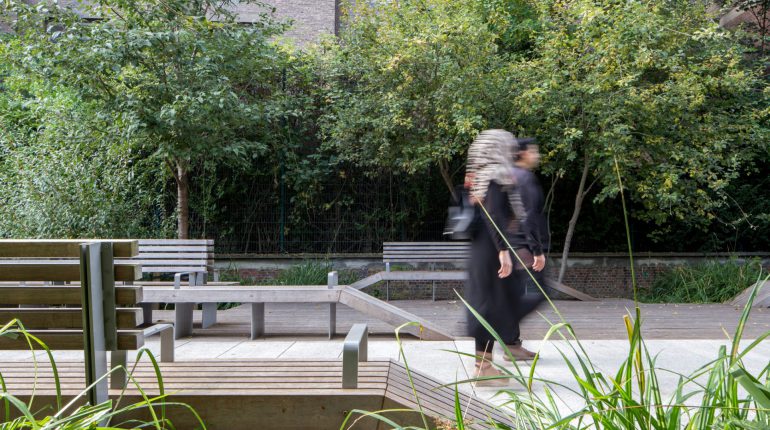The information has now been revealed: three Brussels districts will benefit from urban regeneration under a Sustainable Neighbourhood Contract (CQD in French). The lucky beneficiaries are the districts of Bizet in Anderlecht, the “Gare habitante” in the Midi district of Saint-Gilles and “La petite colline” in Schaerbeek. As a reminder, the aim of the Sustainable Neighbourhood Contracts is to regenerate vulnerable neighbourhoods, with an objective set out and to be achieved within four years.
The next step for these three municipalities is to appoint a consultancy firm to draw up the urban regeneration programme and its environmental impact report. For this tenth round of CQDs, the Region insists on the need to extend the study beyond the strictly urban level, to the social, economic and environmental characteristics within the perimeter.
The municipalities of Anderlecht, Schaerbeek and Saint-Gilles are therefore all looking for a team capable of drafting the basic programme of the neighbourhood contract and its environmental impact report within the deadline and in accordance with the procedures specified in the ordinance of 6 October 2016. Each team can apply for one, two or three CQDs.
1. PETITE COLLINE – SCHAERBEEK
The proposed perimeter for this CQD extends over the hillside from Rue Royale Sainte-Marie to Rue de Brabant and Rue Gallait. The unique aspect of this district is immediately obvious: the streets are extremely steep, making the district picturesque but difficult to traverse, since areas to take a rest are almost non-existent. In this atypical urban configuration, the challenge lies in enabling the local population to easily access and use the area. The operations and actions will therefore focus on the public spaces of the district, to make them accessible, carry out physical improvements, expand them and ensure their environmental quality.
2. BIZET – ANDERLECHT
Located in the south of the municipality of Anderlecht, the Bizet district suffers from considerable isolation due to its surrounding physical barriers, including the canal, the Chaussée de Mons and Avenue Frans van Kalken. Primarily made up of housing stock dating back to the 1950s, the challenge is to open up the district and take advantage of future developments such as the Trèfles district, a planned RER station and the proximity of the neighbouring CERIA. Beyond housing itself, the aim here is to enhance the living environment in general, by working not only on buildings and public spaces but also on developing an environment which contributes to communal life and induces acertain pride and positive sentiment in being part of the neighbourhood.
3. LA GARE HABITANTE – SAINT-GILLES
The Gare du Midi district and its outskirts in Saint-Gilles are already benefiting from regional initiatives, and this new CQD comes to strengthen these initiatives. The perimeter of this district is characterised by a highly precarious social situation and the densest residential area in the Region, where the supply of green spaces does not meet the residents’ demand. There are therefore multiple objectives: the aim is to open up a district surrounded by major urban centres, by setting out a comprehensive vision. The efforts will need to focus on creating and improving housing, mobility, creating facilities and green spaces and revitalising a difficult but strategic district.
SKILLS
– Architect – Urban planner
– Experience in planning
– Experience in participation
– Competences in successfully completing the environmental impact report
BUDGET AND TIMING
– For each of these 3 assignments, the fees are fixed at €105,000 excluding VAT (programme and EIR)
– The assignments should be awarded by the end of this year
– For each of these 3 assignments, an expenses allowance of €1,500 will be awarded to each team invited to tender that has submitted a regular bid but not selected on the basis of the award criteria
AWARD CRITERIA
– Quality of the memorandum of intent (30%)
– Quality of the methodological note (40%)
– Quality and feasibility of the proposed planning (20%)
– Ability to synthesize the operations and actions of the CQD (10%)
